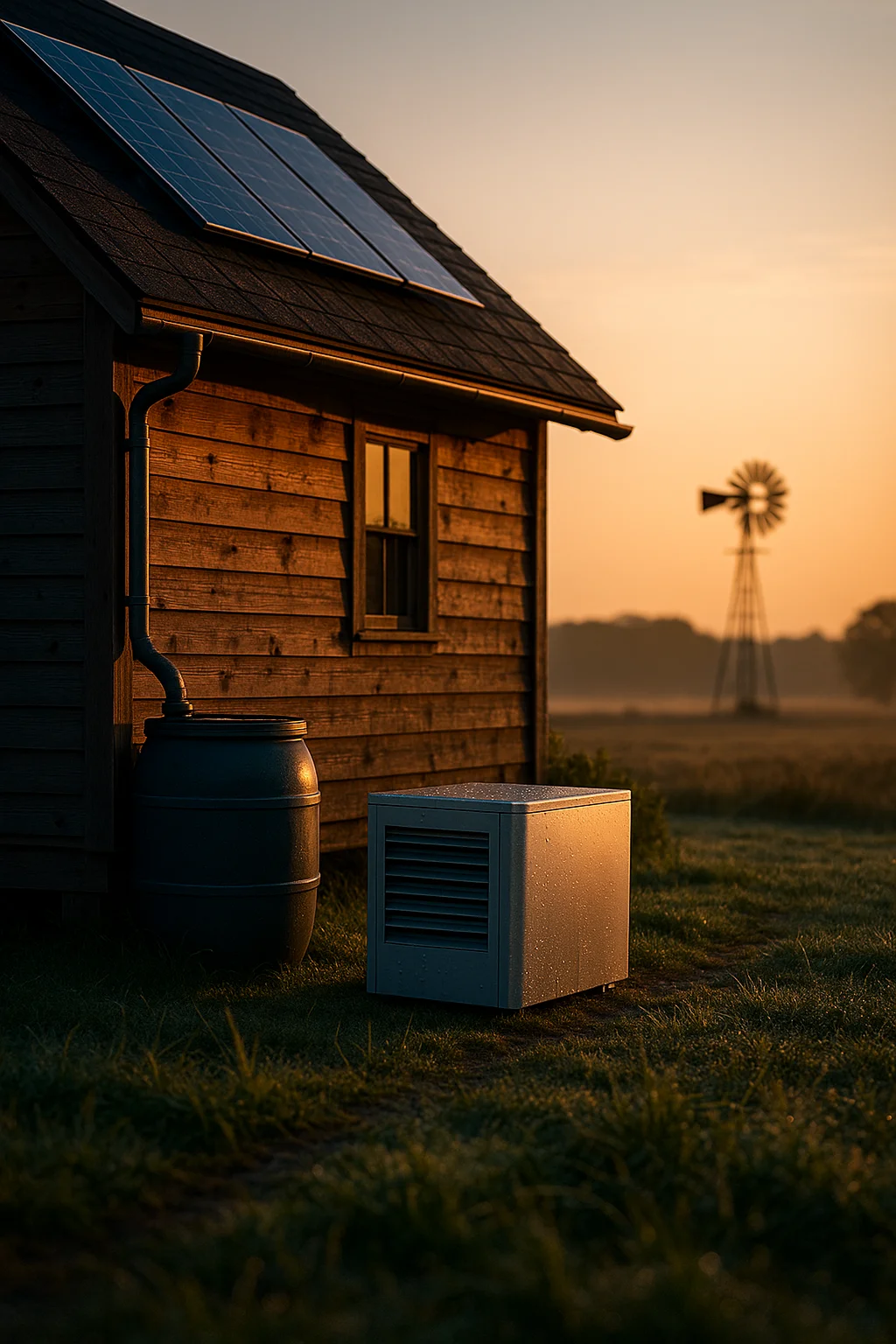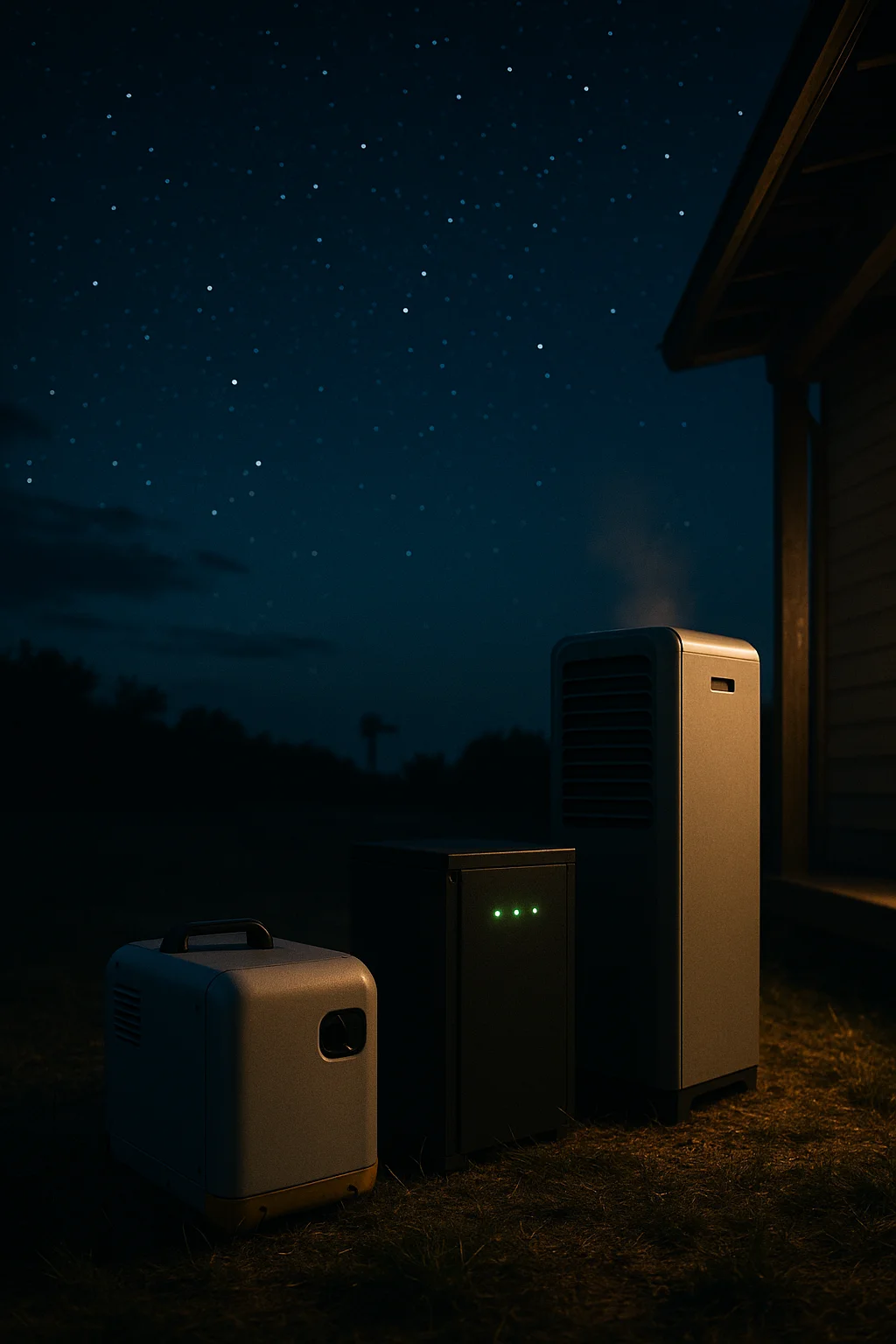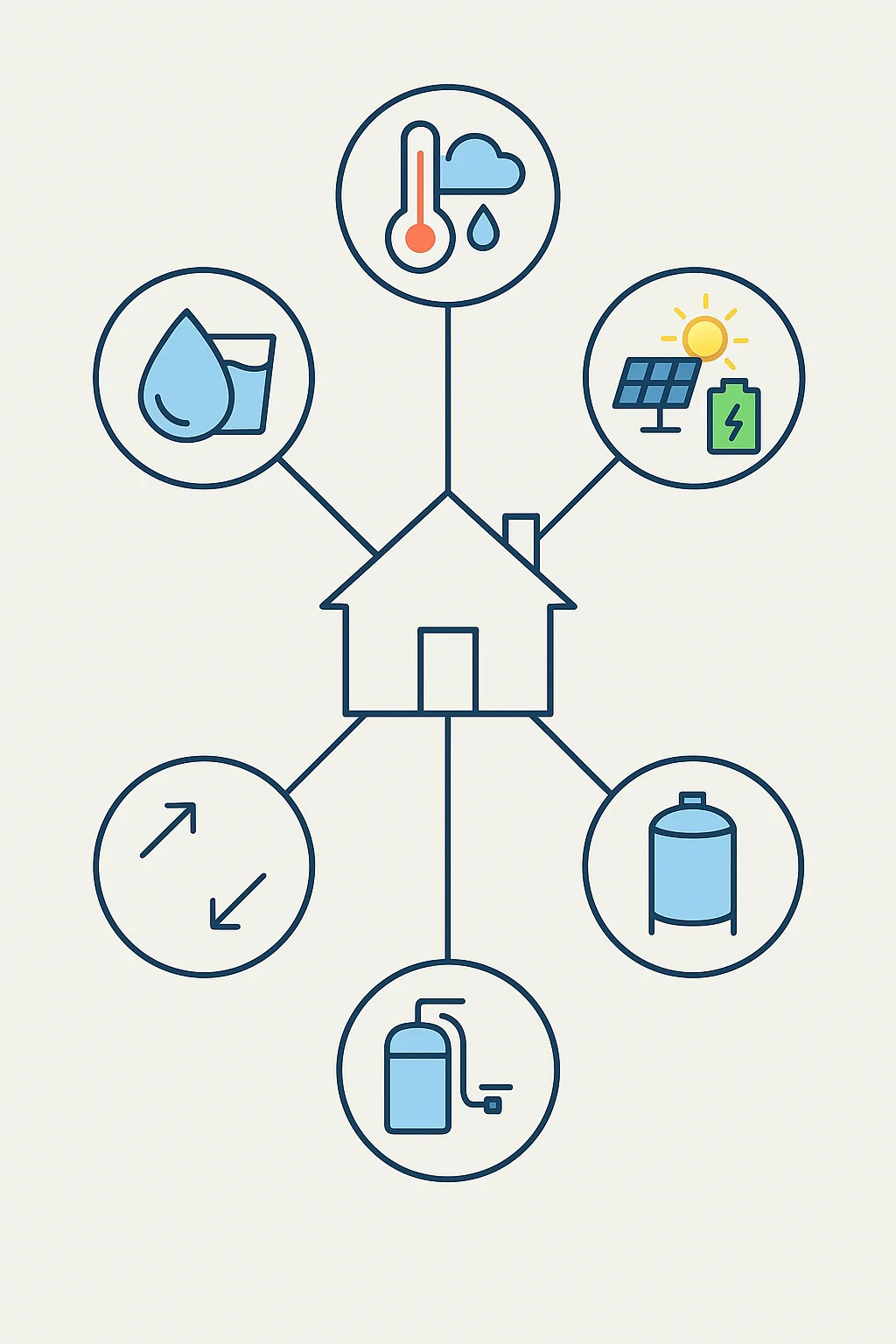You can make water from air at home using two proven approaches—condensation (cooling air below the dew point) and desiccant systems (absorbing moisture then releasing it with gentle heat). This guide explains how they work, how to size a setup, and how to keep your water safe, tasty, and affordable.

👉 Quick next step: If you want a step-by-step plan to make water from air, check The AquaTower—a practical system for households that need reliable potable water.
What It Really Means to make water from air
“Air-to-water” doesn’t conjure H₂O from nothing—it captures the water vapor already in the air and condenses it into liquid you can filter and drink. Condensation units use a cold coil; desiccant units use moisture-loving materials (like certain salts/silica/modern sorbents) that are gently heated to release captured water. Either path can be very effective when matched to your climate and power options.
Benefits, Limits, and Smart Positioning in Your Water Plan

Where this shines: Humid, warm regions; homes with solar; cabins that need a dependable potable top-up.
Limits to keep in mind: Output falls in cool or very dry air; condensation units can draw notable power during low humidity; all systems need maintenance (filters, UV, coil cleaning).
Best practice: Treat AWG as one layer in a resilient plan alongside rainwater, well water, and storage.
Production: What to Expect by Climate
-
Excellent conditions (around 28–32°C, 60–80% RH): mid-size units often produce 10–30+ L/day.
-
Moderate (20–26°C, 40–60% RH): 5–15 L/day.
-
Challenging (<18°C, <35% RH): yields vary; desiccants usually outperform coils here.
Right-size for drinking and cooking first (often 2–4 L per person/day) and add a small, food-grade storage tank (20–40 L) to buffer daily ups and downs.
Choosing a Path: Condensation vs. Desiccant
Condensation (Refrigeration Cycle)
-
How it works: Fan → cold coil → condensate → multi-stage filtration → disinfection → optional remineralization.
-
Best for: Warm, humid climates; homes with grid power or strong PV.
-
Watch-outs: Coil cleanliness is everything; replace sediment/carbon/UV on schedule.
Desiccant (Absorb + Low-Grade Heat)
-
How it works: Sorbent grabs humidity even at lower RH → gentle heat releases it → controlled condensation → treatment.
-
Best for: Mixed or lower-RH climates; setups with solar thermal or waste heat.
-
Watch-outs: Daily heat cycles; choose food-safe materials and plan for easy maintenance.
Water Safety, Taste, and Maintenance
Safety: Pair pre-filters with sediment + carbon and UV (or ozone). Sanitize reservoirs and lines periodically.
Taste: Remineralization (Ca/Mg) gives a natural mouthfeel so the water doesn’t seem “flat.”
Maintenance rhythm: Clean air intakes/coil, replace filters/UV per manufacturer intervals, and calendar these tasks to avoid lapses.
Powering the System Without Headaches

Electricity cost and availability drive the economics, especially for coil-based units. On grid, schedule operation during the most humid hours (overnight/early morning). Off-grid, combine PV + battery for fans, controls, and refrigeration, or leverage solar thermal/waste heat for desiccant regeneration.
💡 Mid-content tip: If resilience matters, keep pumps and appliances online with The Lost Generator—a practical blueprint for dependable power so you can make water from air even during outages.
Practical Insert: From Know-How to a Working Build
If you’d like to skip trial-and-error and follow a documented plan, explore The AquaTower’s step-by-step system—it’s designed to help regular households make water from air consistently, with clear parts lists, assembly guidance, and upkeep schedules.
Sizing Checklist (Use This Before You Buy)

-
Daily liters needed (drinking + cooking, add kids/pets/guests).
-
Local climate (typical temperatures, RH, and dew points by season).
-
Energy plan (grid tariff vs. PV sizing; solar thermal/waste heat for desiccants).
-
Siting (clean air intake, shade, service access).
-
Storage (food-grade tank, easy sanitation routine).
-
Testing (keep basic TDS/chlorine strips; consider periodic lab tests).
DIY Paths That Balance Cost, Safety, and Time

-
Dehumidifier learning rig: Route condensate through a food-safe path, add proper filtration and disinfection. Fine for learning; not always the most efficient long-term.
-
Sorbent mini-rigs: Small beds + a solar hot box can regenerate daily with minimal electricity. Good for tinkerers who enjoy incremental improvements and measurement.
Troubleshooting Quick Wins
-
Low yield? Clean/replace filters, wipe coils, check airflow.
-
Dry/cool weather? Shift runtime to pre-dawn; for desiccants, add solar heat.
-
Taste off? Replace mineral cartridge; sanitize storage.
-
Noise/dust? Re-site intake away from workshops or roads and improve pre-filtration.
CTA: Ready to Secure Your Own Water?
Want a proven plan to make water from air at home—without guesswork?
👉 Start with The AquaTower (household-friendly, step-by-step).
Prefer to lock in reliable backup power first?
👉 Grab The Lost Generator.
Product Recommendations (Editor’s Picks)
Primary Pick — The AquaTower
A clear, documented pathway to help households make water from air with parts, assembly, and maintenance you can actually follow.
➡️ See The AquaTower
Conclusion: Build a Reliable, Layered Water Strategy
The most resilient households make water from air as a potable layer and combine it with rainwater, wells, or municipal supply for bulk needs. Match the tech to your climate, power it smartly, keep filters and UV fresh, and sanitize storage on a schedule. With those habits, you’ll have clean drinking water even when taps run dry.
Affiliate Disclosure
This article contains affiliate links. If you purchase through them, we may earn a commission at no extra cost to you. We only recommend tools and resources we believe are genuinely helpful for household resilience.

